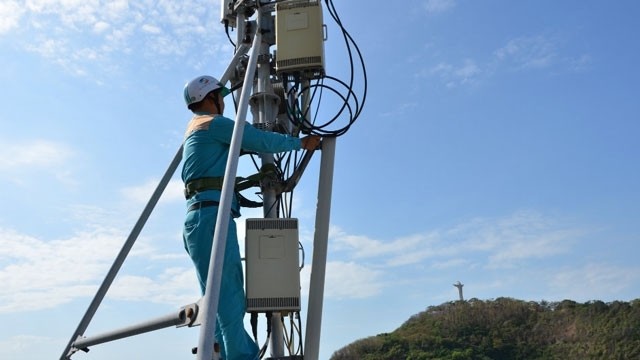Several years ago, mobile service providers were not exactly on the same page with regard to the launch date of 3G services. For instance, Vinaphone and MobiFone — both of which were then under the Vietnam Post and Telecommunications Group (VNPT) — had gained an edge by launching 3G services. Meanwhile, it took Viettel an additional six months to catch up.
However, with the 4G race, the battleground is a stark contrast with competitive launch dates of the major carriers in Vietnam. At this point, all of them have not disclosed their dates and are still waiting for their contenders’ moves.
Viettel Deputy General Director Tao Duc Thang said the company has been scrambling to complete installation of 36,000 4G stations in the last six months, a record number in a record time that no carrier has ever achieved. He added that Viettel is also building an infrastructure system to prepare for future mobile technologies beyond 4G.
Thang added that the firm would launch 4G services nationwide in April with the largest number of stations among the three major carriers, emphasising that Viettel’s 4G network would not only flaunt high speed but will also be bolstered with extensive coverage, high bandwidth and stable signals.
A VinaPhone representative informed that the preparations for the 4G rollout are basically complete. With 15,000 stations installed, the company’s network will cover key areas of provinces and cities across the country. In Da Nang, there will be around 400 high-bandwidth stations to serve two major upcoming events — the Da Nang International Fireworks Festival and the 2017 APEC Summit.
Meanwhile, MobiFone and Gtel, which have also been granted 4G licenses, choose to be quiet about their plans. What has been revealed so far is only a SIM swapping plan, which has been aggressively carried out by their competitors for months. MobiFone said it has installed 4,500 4G stations and would install an additional 8,000 stations in 53 provinces and cities this year.
In the initial phase, MobiFone will focus mainly on key cities such as Hanoi, Ho Chi Minh City, Hai Phong, Can Tho and Da Nang. It plans to expand its 4G services to rural, mountainous and remote areas at a later phase.
With the largest number of 4G stations to be installed among the three telecoms giants, Viettel’s Deputy General Director Thang said it intended to offer its customers the best possible services.
He emphasised that the rollout will be successful only if a high connection speed is sustainable — avoiding a situation where subscribers can enjoy 4G speed for just an hour with variable speed (between 3G and 4G) in the remaining 23 hours.
He also stated that Vietnam’s telecoms market has dramatically changed compared to the last decade. In the past, carriers competed in terms of network coverage and costs, but now, such factors are no longer the determinants. Therefore, carriers also have to change and they must compete in terms of quality.
















